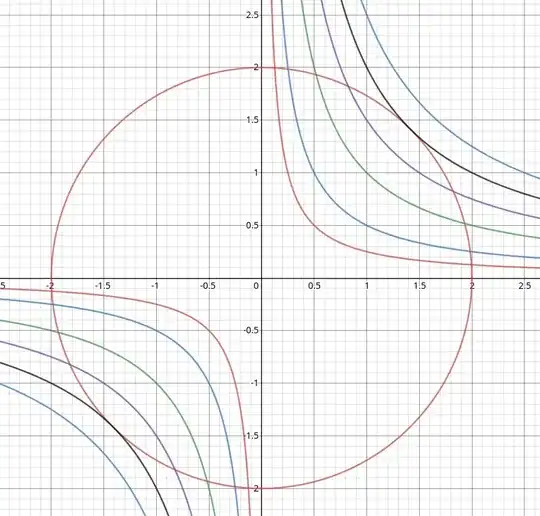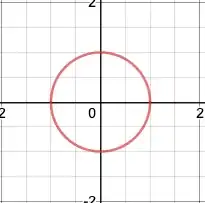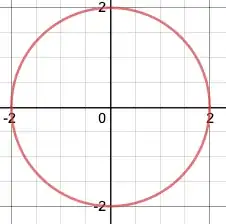These are the level sets $xy = c$ for $c \in \{\frac14, \frac12, 1, \frac32, 2, \frac52\}$:

Interactive version: https://www.desmos.com/calculator/geop2hyhgv
The point of the level curves is to demonstrate two things:
If the maximum of $xy$ is $c^*$ that means there exists points $x^*, y^*$ on the curve $x^2 + y^2 = 4$ such that $x^*y^* = c^*$. This means that $(x^*, y^*)$ is a solution to both $x^2 + y^2 = 4$ and $xy = c^*$. In particular, the two curves $x^2 + y^2 = 4$ and $xy = c^*$ intersect.
The maximum of $xy$ is the largest $c$ for which the curves $xy = c$ and $x^2 + y^2 = 4$ intersect. Notice in the picture that $xy = c$ intersects the circle if $|c| \le 2$ but, for instance, $xy = \frac52$ does not intersect the circle.
When we take $c = c^* = 2$, the curve $xy = 2$ is tangent to the curve at the intersection point(s) $(x^*, y^*) = (\pm \sqrt2, \pm \sqrt2)$. It is this observation that allows us to solve the problem using calculus.
The gradient of $x^2 + y^2$ is $(2x, 2y)$. The gradient of $xy$ is $(y,x)$. For the curves $x^2 + y^2 = 4$ and $xy = c$ to be tangent, the gradients should be parallel. This gives us the Lagrange condition $$(2x, 2y) = \lambda(y,x).$$
The solutions to this are $y = \pm x$ (and $\lambda = \pm 2$, but that's unimportant). I know, from plotting the level curves that $y = x$ will give the maximum and $y = -x$ will give the minimum. If we pretend that we don't know this, then we need to substitute $y = \pm x$ into the curve we know: $x^2 + y^2 = 4$ (we don't yet know what $c$ is so substituting into $xy = c$ doesn't help). This gives $2x^2 = 4$ and $x = \pm \sqrt 2$. Then we check $x = \pm \sqrt 2$ and $y = \pm x$ to find the mins and maxes.


